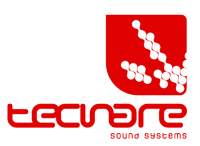Explore the World of Sound
How Sound Reflections Affect Speech Intelligibility
Speech intelligibility is the ability to clearly understand spoken words in a given space. In environments such as auditoriums, conference rooms, or religious temples, the acoustics of the venue play a fundamental role in the clear transmission of the message. One of the most critical factors influencing intelligibility is the presence of sound reflections, which can either enhance or deteriorate speech perception depending on their intensity, direction, and arrival time.
In this article, we will explore how sound reflections affect speech intelligibility, what factors influence their behavior, and what strategies can be used to control them in different spaces.
Sound Reflections
What are Sound Reflections?
When sound is emitted in a space, it doesn’t only travel directly to the listener, but also interacts with the surfaces of the venue. Upon hitting walls, ceilings, floors, and objects, sound waves can be:
- Reflected: Bouncing off surfaces and continuing to propagate.
- Absorbed: Part of the sound energy is dissipated in the surface.
- Diffracted: Changing direction when encountering an obstacle.
- Diffused: Spreading more evenly in the space.
Reflections can be beneficial if they reinforce the original signal, but they can be detrimental if they create confusion and reduce message clarity.
Types of Reflections and Their Impact on Intelligibility
-
Early Reflections (Beneficial)
These arrive at the listener less than 50 milliseconds after the direct sound. Early reflections can improve speech perception by reinforcing the original signal without causing perceivable echo.In well-designed auditoriums, early reflections are leveraged by using reflective surfaces on the sides and ceiling to improve message clarity.
In smaller spaces, early reflections can make the voice sound fuller and more natural. -
Late Reflections and Echo (Detrimental)
When reflections take more than 50 milliseconds to reach the listener, they can be perceived as a sound separate from the original, creating echo and reducing speech intelligibility.In large auditoriums or churches with hard surfaces, the sound may keep bouncing for several seconds, creating excessive reverberation time that hinders speech comprehension.
In spaces with high ceilings and no acoustic treatment, echo can cause words to overlap, losing important details of the message. -
Standing Waves and Resonances
In closed rooms with regular dimensions, sound waves can become trapped between parallel surfaces, creating standing waves that amplify certain frequencies and cancel others. This affects intelligibility because:- Some syllables may sound too loud, while others are inaudible.
- Unwanted resonances may occur, making speech perception difficult.
-
Haas Effect and Perception of Directionality
The Haas effect states that when a sound reflection arrives with a delay of less than 35 milliseconds after the original sound, our brain merges it with the primary signal rather than perceiving it as a separate echo.This phenomenon is used in auditorium design to improve the perception of the sound source’s directionality, ensuring the sound seems to come from the speaker or stage.
However, if the delay exceeds 50 ms, the effect breaks, and the reflection is perceived as a separate sound, causing confusion.
Factors Affecting Intelligibility in a Space
-
Reverberation Time (RT60)
It is defined as the time it takes for the sound to drop 60 dB after the sound source stops. A high reverberation time (>2 s) can make speech comprehension difficult, while an RT60 between 0.5 and 1.5 s is usually optimal for verbal communication. -
Surface Materials
Reflective surfaces (glass, marble, concrete) can amplify late reflections and create echo.
Absorptive materials (carpets, curtains, acoustic panels) help control reverberation and improve intelligibility. -
Room Geometry
Rooms with high ceilings and parallel walls may generate standing waves and unwanted resonances.
Designs with sloped surfaces or diffusers can better scatter reflections and avoid sound buildup. -
Position of the Sound Source
Proper placement of speakers or the voice emission point is key to minimizing unwanted reflections and enhancing clarity.
Strategies to Improve Speech Intelligibility
-
Use of Absorptive Materials
Incorporating acoustic panels, carpets, and curtains at strategic points can reduce late reflections.
In auditoriums, absorptive materials can be used at the back of the room to prevent sound buildup. -
Optimization of Room Geometry
Including acoustic diffusers to disperse reflections evenly.
Avoiding parallel walls and flat ceilings that may create standing waves. -
Sound System Design
Using speakers with controlled dispersion to direct sound towards the audience and minimize reflections on walls and ceilings.
Implementing DSP processors to adjust equalization, delays, and phase alignment in amplification systems. -
Strategic Placement of the Sound Source
In conferences, it is recommended that speakers use close microphones to enhance voice capture and reduce interference from ambient sound. -
Use of Sound Reinforcement
In large spaces, using distributed sound systems with properly adjusted delays can improve coverage and minimize intelligibility degradation caused by distance.
Conclusion
Sound reflections can be an ally or a problem for speech intelligibility depending on how they are managed in a space. Well-controlled early reflections can improve message clarity, while late reflections, standing waves, and excessive reverberation times can make comprehension difficult.
To optimize intelligibility in auditoriums, conference rooms, or any space intended for verbal communication, it is essential to consider the room’s acoustic design, choose appropriate materials, and use optimized sound systems.
Explore Other Topics
Acoustic Science
Audio Technology
Sound Design
Music Production
Environmental Acoustics
Psychoacoustics
Audio Engineering
Sound History
Featured Articles
Tecnare
Loudspeakers Series
E Series
IBZA Series
V Series
ALIS Series
Array Series
SW Series
KT Series
TANIT Series
CS Series
Amplifiers Series
Digital Processors
Accessories
